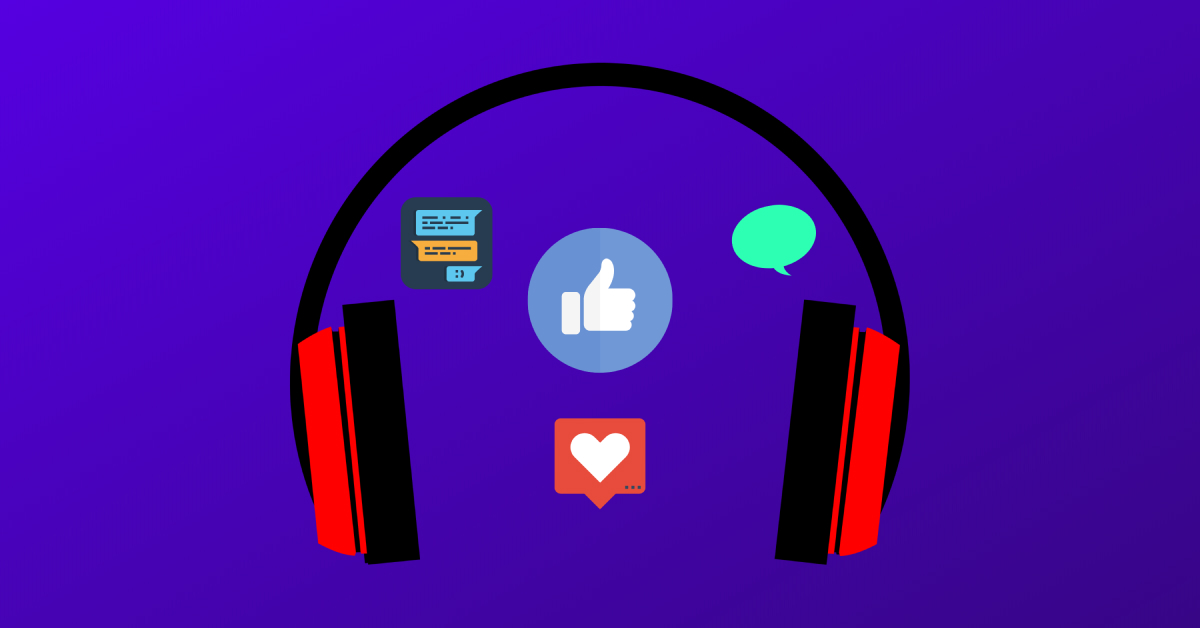Does your social media habit also go like this?
Tap Like.
Hit Follow.
Click Share.
Rinse, then repeat.

And I wouldn't be surprised if you also do this every 10 minutes or so. After all, social media has taken over our lives for the past few years. Most individuals are social media users. Regardless of their age or gender, have their own social media accounts.
Guess what: As an ecommerce brand owner, this is a huge opportunity that you shouldn't miss!
Because one challenge every ecommerce store faces is this...
How to stand out from the thousands of other ecommerce sites available on the internet. And how to increase sales, of course.
The good thing is that one of the most effective methods of achieving this has emerged over the past few years. It's social media marketing!
You see, ecommerce brands today are able to do this... leverage both unpaid (organic) and paid social media marketing on various channels.
In today's blog post, I'm going to show you the five easy steps to creating an effective social media strategy (and everything in between!).
To kick it off, let's go over...
What Is A Social Media Marketing Strategy?

In a nutshell, your social marketing strategy is a comprehensive guide moving forward. It outlines what, when, how, and why you should post on your social pages.
Your social media marketing strategy is more than posting photos. It's an extensive plan that has a purposive goal.
A strategy is also an essential part of your social media marketing.
Before you embrace social media for your Shopify store, consider this. You must develop a big-picture view of what results in you want from your social media efforts. And also how you can best achieve them.
When you create your plan, you should also know the...
Benefits Of Shopify Social Media Marketing
Lets You Engage With Your Audience
You can't take the "social" part out of social media.
Through social media platforms, you can build genuine relationships with your potential customers. Eventually, they turn into loyal customers.
For instance, your audience can ask you questions about your products or services directly. After buying from you, they can also leave feedback and reviews on your social media pages. You will need to download a product reviews app for your Shopify store.
It's not a one-way street, either. You can talk to your customers anytime you want! Reply to their queries. Go through their reviews and testimonials.
This way, you will also have the chance to know what you're doing well. And if you're not doing something well, it gives you the ability to improve.
Speaking of improvements...
Advertises Your Brand More Effectively
Imagine this: You run a Shopify store that sells organic pet products. Since your target audience is highly specific, it can be hard to reach them through traditional marketing.
But with social media marketing, you can easily reach your niche audience.
For instance, you can use specific hashtags for Instagram and Twitter. On Facebook, you can "boost" your posts. This means you can opt for your posts to reach a targeted audience. Say, people who "liked" pet posts in the past.
It narrows down your audience based on their social media behaviors. That gives you a more qualified lead.
Besides effective advertising, social media marketing also...
Improves Search Engine Ranking
It's a fact: everyone uses Google for everything. That includes products they want to buy.
So, being on page 1 of Search Engine Page Results should be one of your priorities. Obviously, ranking well will bring more traffic to your online store. And the more traffic, the more sales you'll see.
To do that, you should be focusing on your Search Engine Optimization (SEO).
And social media has a positive impact on your SEO. Take this: 58% of marketers use social media to see improved search engine ranking.
And the most important benefit of it is that it gives you...
Higher Conversion Rates
Your social media presence increases your visibility. Exactly how does it work?
Well, each post that you make can lead potential customers to your online store. That includes every photo, video, comment, or blog article you post.
All of the things you share affect your interactions with your audience. That humanizes your brand. And we all know people prefer to do business with other people, instead of a faceless company.
So, the better interaction you have with your customers, the more likely they will think of your store.
Each like, comment, and share can boost your conversion rate and sales!
Let's now explore each step to an effective social media marketing strategy...
5 Steps Of Social Media Marketing Strategy
1. Set Your Goals
Clearly defining your goals will help you achieve them. It will also help you measure the efficacy of your efforts on social media.
So, your strategy should always give your Shopify store's primary goals at its core. Here are the goals you can consider:
- Driving traffic and sales. This should be your foremost goal for your ecommerce business.
- Building brand awareness. You can reach your target audience through social media. Plus, you also make it easier for other potential customers to find you.
- Engaging your audience. Don't settle for fake or paid-for followers. Create an authentic community that is genuinely interested in your products or services. Build a loyal follower out of your customers.
- Providing customer support. Your customers can freely contact you through social media platforms. They can all direct any question, complaint, or concern immediately your way.
- Gathering client feedback. Your Shopify store should be customer-centric. This means taking in their feedback. Use it to improve aspects of your online store that they think need betterment.
Keep this in mind... You can't achieve any of these goals without knowing what signals to pay attention to.
They need to be distilled down into measurable objectives. It needs to clearly indicate success or failure, such as:
- Amount of traffic generated from social media
- Number of followers on various channels
- The number of impressions/reach, likes, shares, mentions, etc.
- The ratio of website visitors to sales conversions
- How quickly you answer customer questions and complaints
One last thing: remember that your goals should be flexible. Social media platforms' features constantly change. So does the behavior of your customers. Always take note of the changes and adapt your goals to them.
The next thing you have to do is to...
2. Determine Your Target Audience

Ask yourself this: Who is my ideal customer?
You should spend some time researching your target audience. Look for demographics and psychographic data. It will help you form a mental image of what kind of person is likely to buy from your Shopify store.
Then, you should put it all together to create a buyer persona. Some key data points to consider include:
- Location
- Age
- Gender
- Interests/hobbies/passions
- Career/Industry
- Income level
- Relationship status
- Favorite sites/apps
- Why do they want to buy your product
- Concerns stopping them from buying
There's no concern for you to be 100 percent accurate with this persona. In fact, you should keep it as broad as you can.
You see, the point of this whole exercise is to flesh out your ideal buyer. Through this, you can easily turn them into a customer. Plus, it also helps you figure out the ideal brand voice your store needs to use to appeal to them.
Start evolving from there as you execute your strategy and get honest feedback. Why not elevate to several audiences?
But for now, you need to think about...
3. Build Your Content Mix
In this step, think about this: What does your target audience want to see from you?
So, you need to define the content formats and post types you plan to use.
This makes it easier for you to generate new content to share. And it gives your audience both variety and consistency at the same time.
You can incorporate the following types into your content mix:
- News (industry developments or trending news)
- Motivation (inspirational quotes, stories, and photos)
- Education (such as research stats, quick tutorials, and how-to guides)
- Promotion (such as high-quality product shots, demo videos, and testimonials)
- Customer-generated content (giveaway contests, Q&A sessions, fun quizzes/polls)
First, aim to start with at least three content formats/types. Carefully balance between those that are easy to produce and those that take some time.
For example, you might want to assign Mondays for posting customer testimonials. Then inspirational images on the weekends.
Also, make sure you never post too many promotional posts in a row. Your brand might come off as "too sales-y" to new followers that way.
Once you have your content calendar set, you can...
4. Choose Your Channels
There are a lot of social media channels to choose from when it comes to your online store's brand presence.
Being this spoilt for choice presents two potential pitfalls:
- Building your brand presence on more social media channels than you can keep up with
- Having the same approach for every social channel instead of understanding the strengths of each platform
Thankfully, you can avoid these mishaps. Here are some quick social media marketing tips for each of the channels that are popular for ecommerce:
- Facebook is great for delivering targeted ads. You can also use Facebook Messenger to provide customer support. Create a Facebook Shop to sell to your ideal customers directly.
- Instagram is essential for any ecommerce business. Take advantage of this visual medium. Use hashtags to be discoverable. Take advantage of influencer marketing, especially with Live and Stories.
- You can use Twitter to showcase your brand's personality, especially if it's quirky or funny. It's also suitable for audience engagement and setting your brand up as a thought leader.
- Network with other brands. Pinterest users come with more intent to actually buy than those on any other channel. It's perfect for Shopify stores that sell fashion, handcrafts, or home décor.
- YouTube is the second-largest search engine in the world. That means utilizing it will significantly improve your SEO. After researching, you should include the following on all your videos: target keywords in the title, thumbnails, descriptions, and tags.
After all your hard work, it's time to...
5. Execute Your Social Media Marketing Strategy

The next step is to create a framework for managing your social media calendar. Tools such as Trello, Later, CoSchedule, and Buffer can come in handy.
For example, the Trello board lets you prepare the copy, images, and whatever else you need for your content marketing.
Then, when everything is ready, you can use Buffer for easy, automatic scheduling.
In addition, pay attention to how often you post on each of your chosen channels. How, you ask?
Strike a delicate balance between spreading yourself too thin and spamming your audience's feeds. The key is to start slow. After that, post more as you figure out what works and what doesn't.
Another point to consider is to keep in mind when to post. Experiment with different times. Discover what your target audience responds to best.
For instance, start with the common times when people check their social media feeds. This is in the morning, at lunchtime while commuting, and before bedtime.
Lastly, create templates whenever possible. That makes it easier for you to generate new content on an ongoing basis. It will also help you develop a compelling content series if you'd like.
And you're now prepared to conquer the social media world! To help you further, let me give you one crucial tip...
Keep Your Ear To The Ground. Embrace Social Listening!

So, what is social listening?
It's the act of monitoring social media conversations. Your aim is to discover new opportunities and threats for your business. Use all the information to leverage and deal with quickly.
Your ecommerce business can identify key moments for your brand to jump in. As well as to engage with prospective customers and existing ones.
Get this: Track keywords relevant to your brand. This way, you can reach out to potential customers in their moments of highest intent.
It also helps you unearth and address indirect complaints.
Don't miss out! Without social listening, such indirect complaints can go unchecked. It can quickly spiral out of control. You'll then have to deal with your brand's irreparable damage.
Here are some listening tools to help you track and leverage social media conversations.
Keep those ears open!
So, what are you waiting for? Get to work and...
Let's Get Social!

(source)
All in all, ecommerce success doesn't happen by accident. Especially when it comes to social media marketing, no matter what you're selling.
Keep experimenting!
It also takes time for your ecommerce social media channels to succeed. Be patient!
Change and adapt the steps you just learned. Find out what works best for your specific Shopify store.
Improvements shouldn't stop at your social media marketing. Yes, your social media following number is bangin'. But do you know what can turn them away at the last moment?
A lousy Shopify theme.
Enter Debutify Theme. It's not your regular, standard Shopify theme. It's your Profit Optimization Partner.
Debutify is armed with over 50+ Add-Ons. It optimizes not just your store's aesthetics... It also improves your conversions, AOV, and profits.
Optimize Your Ecommerce Website With Debutify — Now!
14 Days Trial. 1 Click Installation. No Credit Card Required.





